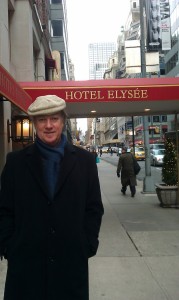by Clare Langley-Hawthorne

It’s raining again – and for those of you who have been following the news you know that isn’t a good thing.
After the terrible floods in Queensland that consumed an area the size of Germany and France combined (yes, you read that right), my home state of Victoria continues to face its own flood crisis. Over the last week more than 70 towns across the state and around 4,300 people and 1,700 properties have been affected. As I write this blog, residents are being evacuated as floodwaters advance in the northern part of the state along the Murray River. Although no one I know has been directly affected, all that has happened over the last few weeks has been a sobering reminder of just how much Australia remains at the mercy of the weather.
Jim’s blog post (and comments) yesterday stressed the pitfalls of describing the weather in a novel, but anyone writing a book about Australia would have to acknowledge the weather, just like the landscape, is an integral character.
Even though I have an indifferent relationship to my ‘re-adopted’ home, I cannot help but admire the tenacity of the people who try and tame its wild shores. Just a year or so ago Australians were facing one of the worst droughts in history and now they are facing once-in-a-century floods. If you were to describe the Australian weather as a character, you might think in terms of a Greek goddess wreaking vengeance.
But the weather has also brought out some of the best Australian characteristics – the ‘mateship’ and determination to go on, sacrifices made for others (including, sadly a 13 year old who gave his own life to save his 10 year old brother) and the sense of community that I know so many Australians cherish. For my own part, recent events have made me realize that, although the weather can be both boring and cliched in fiction, sometimes it must take center stage.
BTW: Many people may recognize the title of this blog post from a famous poem about Australia by Dorothea Mackellar but few are probably familiar with the poem in its entirety. I thought, in the circumstances, it was appropriate to share it:
My Country
by Dorothea Mackellar
The love of field and coppice,
Of green and shaded lanes.
Of ordered woods and gardens
Is running in your veins,
Strong love of grey-blue distance
Brown streams and soft dim skies
I know but cannot share it,
My love is otherwise.
I love a sunburnt country,
A land of sweeping plains,
Of ragged mountain ranges,
Of droughts and flooding rains.
I love her far horizons,
I love her jewel-sea,
Her beauty and her terror –
The wide brown land for me!
A stark white ring-barked forest
All tragic to the moon,
The sapphire-misted mountains,
The hot gold hush of noon.
Green tangle of the brushes,
Where lithe lianas coil,
And orchids deck the tree-tops
And ferns the warm dark soil.
Core of my heart, my country!
Her pitiless blue sky,
When sick at heart, around us,
We see the cattle die –
But then the grey clouds gather,
And we can bless again
The drumming of an army,
The steady, soaking rain.
Core of my heart, my country!
Land of the Rainbow Gold,
For flood and fire and famine,
She pays us back threefold –
Over the thirsty paddocks,
Watch, after many days,
The filmy veil of greenness
That thickens as we gaze.
An opal-hearted country,
A wilful, lavish land –
All you who have not loved her,
You will not understand –
Though earth holds many splendours,
Wherever I may die,
I know to what brown country
My homing thoughts will fly.

 y real writing done but I did get a chance to brainstorm plot options and clear the way for what (I hope) is the answer to my overly complicated plot. The thing is I now have two days to start revving the engines to get back down to writing full time and I feel like a rusty old motor in the scrapyard.
y real writing done but I did get a chance to brainstorm plot options and clear the way for what (I hope) is the answer to my overly complicated plot. The thing is I now have two days to start revving the engines to get back down to writing full time and I feel like a rusty old motor in the scrapyard. 





